CBC News, May 20, 2014–Turmoil at the University of Saskatchewan is intensifying with the sudden resignation of the provost and academic vice-president Brett Fairbairn.
Word of Fairbairn’s resignation came half an hour before an emergency board of governors meeting, which started at 8 p.m. CST Monday.
In a written statement, Fairbairn said stepping down was “the best contribution I can now offer [the university] under present circumstances”.
Fairbairn is the official who wrote last Wednesday to Robert Buckingham, the head of the School of Public Health, firing him as both the school’s executive director and tenured professor, and ordering him off campus.
Demands for more departures
The move touched off an uproar over threats to academic freedom. The firing came after Buckingham openly voiced concerns about the impact on his school of the cost-cutting plan TransformUS.
Buckingham subsequently had his tenure restored, but not his administrative job.
Fairbairn’s resignation touched off a flurry of tweets, with some calling for more departures.
“That’s one down”, said one tweet. “President next?” said another.
‘A deepening controversy, if not crisis’– Minister of Advanced Education, Rob Norris
The province’s minister of advanced education, Rob Norris, spoke at the closed-door board meeting.
He emerged after about an hour, and spoke to the media before leaving for his constituency office.
Norris said he spoke to the board about his continuing concerns “regarding compliance with the University of Saskatchewan Act, and also what I see and what we see as a deepening controversy — if not crisis — regarding the national reputation and international reputation of the University of Saskatchewan.
“That reputational damage that continues is of very deep concern to us,” Norris added.
One section of the act requires senior administration to report to the board before the dismissal of suspension of individuals, “so there are real questions about the substance of that kind of report process, especially given, and in light of the reversal that took place, and some of the commentary around that reversal,” Norris explained.
He left it to the board to consider whether it had breached the act or not.
No violations, board chair says
Around midnight, board chair Susan Milburn emerged, and told reporters both the board and the administration have complied with the legislation.
Just before Milburn came out to speak, she released a written statement saying: “Tonight, we discussed the leadership of the university in depth. We do not want to act in haste and therefore we have not made any final decisions, other than to maintain our strong commitment to financial sustainability and renewal. We will conclude our due diligence before a decision is rendered on university leadership.”
Asked if the board is looking for any other resignations or dismissals, Milburn said, “We don’t want to make any hasty decisions.”
She confirmed the board has received outside legal advice, and that it will discuss the matter further when it meets again next Monday and Tuesday.
Faculty association condemns ‘veto’
One item not discussed Monday night was the demand by the faculty association to rescind a board decision giving the university president a “veto” on tenure decisions.
Faculty association chair Doug Chivers says that violates their collective agreement, which states it’s up to the board of governors to approve recommendations on tenure.
And, he said, that view has been upheld in a judicial review.
Milburn said the association’s demand was not on the agenda for Monday night’s meeting.
When asked about the faculty’s concern, Norris called it a ‘very serious allegation,’ and said his department is looking into it.
Read More: CBC News

 Follow
Follow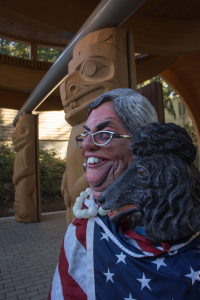
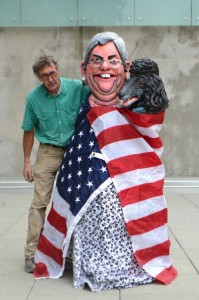 THE CASE OF THE MISSING SCULPTURE
THE CASE OF THE MISSING SCULPTURE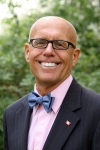
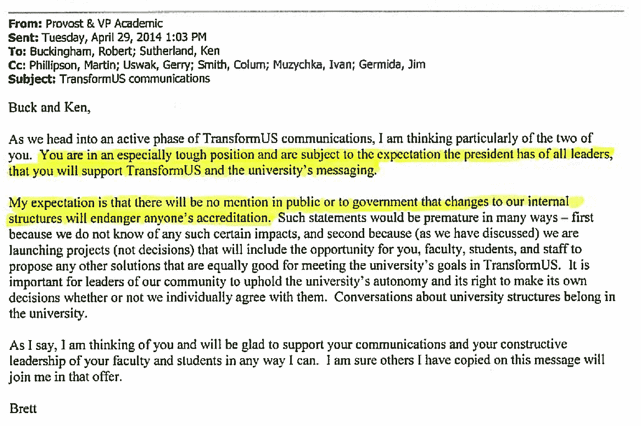
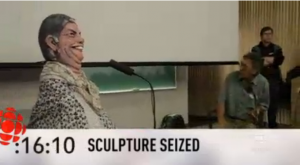

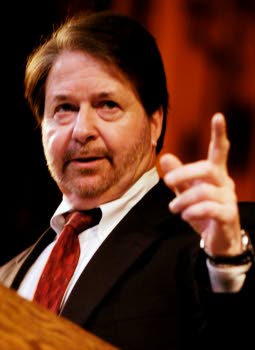
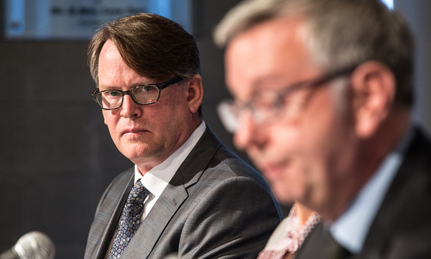
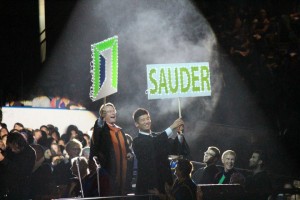
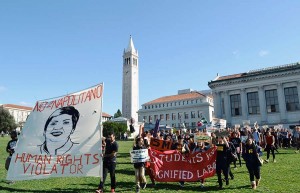
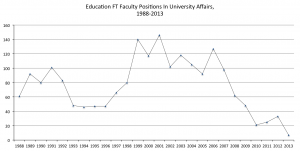
Reasonable hostility: Academic freedom & speech under threat #highered #edstudies #criticaled #bced #bcpoli #ubc #yteubc
No disrespect, but… Politic for politic, as faculty and student activism over the last decade was generated in response to administrative measures taken to devalue academic budget lines and increase debt loads, administrators formed policies that shored up their powers to police campus speech and launch investigations. Following an introduction of a Respectful Environment policy in 2008, in anticipation of an upcoming political protest on campus in March 2009, the President of UBC circulated a “Respectful Debate” memo warning students and faculty to “pay special attention to the rules that govern our conduct” for speech. Legislation of respect entangles or snares the left and right in the same finely meshed dragnet attenuating civil liberties. This also recalibrates a network of surveillance media and technologies, challenging nearly all protections in the workplace. Some self-identified centrists or voices of reason welcome the new measures, adopting roles of third persons while reporting to administrators that loose lips sink scholar-ships.
In Canada and the US, these new respectful workplace policies, which anticipate or respond to workplace legislation and court decisions, mean that academic freedom and charter or constitutional rights noticeably contract at the campus gates. Watching postsecondary institution by institution adopt similar respectful workplace policies, the Executive Director of the Canadian Association of University Teachers (CAUT), issued a memorandum in late March 2009 advising vigilance: “the test of ‘disrespect’ identified in these policies is for the most part experiential and subjective – notions like ‘feelings of shame’ or ‘embarrassment’ crop up repeatedly.” He subsequently asserted, “a major problem in Canadian universities is not that too many people are asserting their academic freedom, but that too few are.”
Similar policies in the US are compounded by the Supreme Court’s 2006 Garcetti v. Ceballos opinion that “when public employees make statements pursuant to their official duties, the employees are not speaking as citizens for First Amendment purposes, and the Constitution does not insulate their communications from employer discipline,” reinforcing managerial discretion and prerogative. Although academic freedom remains a special concern of free speech rights and was deferred by the Court in Garcetti, legal analysts such as Harvey Gilmore concur that “Garcetti has now become the definitive statement on a public employer’s discretion in managing office operations, and that discretion includes controlling an employee’s speech made in the scope of the employee’s professional capacity.”
Following legislation in four other provinces, on 1 July 2012 new legislation in BC came into effect through an amendment of the mental disorder section of the Workers Compensation Act. The new amendment in Section 5.1 provides for potential compensation if the disorder
(i) is a reaction to one or more traumatic events arising out of and in the course of the worker’s employment, or
(ii) is predominantly caused by a significant work-related stressor, including bullying or harassment, or a cumulative series of significant work-related stressors, arising out of and in the course of the worker’s employment.
For legal preparation for this legislation now common across Canada, universities such as UBC folded a large scope of potential infractions into their respectful workplace policies. What stands as protection for disability or “mental disorder” and against “bullying or harassment” under the law is extended in higher education policy to common modes of academic speech—commentary and criticism—that might be articulated in the wrong tone.
Offices of Human Resources introducing or monitoring respectful workplace policies oversimplify speech by stressing, “it is not what you say but how you say it that counts.” Repeated in HR across higher education and curiously by some administrators, this folksy maxim come respectful workplace policy draws on centuries of etiquette texts. “Rather than seeing public talk occasions as needing politeness or civility, a better norm” Karen Tracy proposes, “is reasonable hostility.” She effectively hashes out parameters for democratic communicative practice and flips this “aphorism on its head, it is not merely how something is said, but what a person says that matters.”
Only certain types of face-attack are legitimate and desirable in local governance situations. ‘Reasonable hostility’ is the name for acts that are. Reasonable hostility involves person-directed attack; it is remarks that imply disrespectful, undesirable things about others. Targets of reasonable hostility will judge speakers uttering those remarks to be rude, disrespectful, unfair, and so on…. A speaker might be cognizant that his or her remarks may have this effect, but their purpose is to express outrage about a wrong. The speaker sees self’s central aim as witnessing a truth or expressing righteous indignation.
Faculty and students are bookended by a reformalization of academic speech on one side and a normalization of administrative equivocation, deception included, on the other. Can voices of critique and voices of liberty speak together, with reasonable hostility, as a voice of truth? Can the left and right speak (together)?
Read More: Petrina, S. & Ross, E. W. (2014). Critical University Studies: Workplace, Milestones, Crossroads, Respect, Truth. Workplace, 23, 62-71.
Comments Off on Reasonable hostility: Academic freedom & speech under threat #highered #edstudies #criticaled #bced #bcpoli #ubc #yteubc
Posted in Academic freedom, Accountability, Administration, Advocacy, BC Education, Censorship, Commentary, Critical University Studies, Ethics, Faculty, Free speech, Legal issues, Organizing, Solidarity, Student Movement, Students, Unions, Working conditions
Tagged Academic freedom, Administration, Ethics, Free speech, Legal issues, Organizing, Students, Working conditions